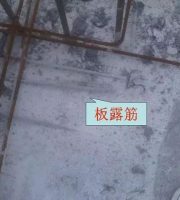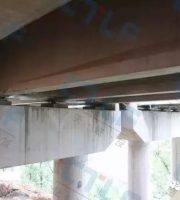2.
2.
The elastic anti crack putty has good adhesion and crack resistance.
(2) If quick drying repair materials are used for repair, reinforcing mesh cloth should be used to strengthen the repair to prevent cracking in the future..
The adhesion principle is: (1) The material has hydroxyl, ether and epoxy groups.
(4) Paste the reinforced grid cloth.
(1) Use an electric cutting machine to cut U-shaped grooves for cracks; (2) The construction wire brush and brush shall be used to remove the dust at the groove; (3) Use elastic anti crack leveling putty to repair and fill the cracks.
Fine crack treatment (width less than 0.5mm) 1.
Treatment of obvious cracks (width greater than 0.5mm).
Treatment of non structural cracks (refers to shrinkage cracks, with the obvious feature that multiple cracks intersect at one point).
During construction, the cracks shall be filled to prevent hollowing inside the cracks.
The epoxy group and the surface of the base course containing active hydrogen generate hydrogen bonds, so the adhesion is particularly strong.
The strong polarity of hydroxyl and ether groups causes electromagnetic and chemical adsorption between the mixed base course treatment material and the base course.
Detailed treatment plan for base course cracks The cracks in buildings will have a serious impact on the life and appearance of buildings.
The amount of this material is generally about 1.5kg/m, and the number of batches is one.
3、 Treatment of external corners at door and window openings The treatment of external corners at door and window openings is similar to that of common external corners, except that the following aspects should be noted: (1) The repair materials for door and window openings should be fully cured before coating, so as to prevent the paint film from bleeding, fading and other pathological changes in the future.
The following solutions are provided for the cracks existing in the base course.
At the same time, this material can solve the micro cracks caused by shrinkage of the base due to temperature changes, In addition, the flatness of the base course can be adjusted at the same time.
2.
(2) .
The two facades connected at the internal corners shall be scraped separately; (2) When scraping each wall surface in batches, ink lines shall be used to mark the internal corners.
In order to avoid the movement of structural cracks, it is necessary to paste the reinforced grid cloth.
When scraping in batches, ink lines shall prevail for each elevation, so as to ensure the straightness of the internal corners.
(2) Treatment of internal corners of buildings 1.
▲ Contact Hotline: 18701149098 ▲ Contact Hotline: 13958959999 ▲ Contact Hotline: 13869550906 ▲ Contact Hotline: 15117972998 ▲ Contact Hotline: 15801451704 I.
2、 Detailed treatment scheme for internal and external corners (I), treatment of external corners of buildings (1), treatment scheme for external corners when scraping base plastering materials (1), two facades connected at external corners shall be scraped separately; (2) When scraping each wall surface, a guiding rule shall be used to protect the external corners, so as to ensure the straightness and firmness of the external corners.
3.
Recommended by excellent enterprises ▲ Contact Hotline: 18606397262 ▲ Contact Hotline: 13480811279 ▲ Contact Hotline: 13503769232 ▲ Contact Hotline: 15620812476 ▲ Contact Hotline: 185264436072.
Elastic crack resistant leveling putty shall be used to repair minor cracks.
Clean the fine crack with wire brush and brush to remove the dust at the crack, and clean the dust with clean water if necessary; If the dust is not cleaned, the adhesion between the repair material and the base course is not firm, and delamination is easy to occur for a long time.
(1) .
When painting, the external corner treatment scheme (1), the two facades connected at the external corner shall be separately painted; (2) When spraying each facade, it is necessary to wait until the other facade is dry, and at the same time, the other facade shall be protected for curing to prevent the paint from atomizing and polluting the film of other paints, so as to avoid the phenomenon of paint blooming.
Structural cracks (repair shall be carried out by the civil engineering party, but the following procedures are recommended) (1) Use electric cutting machine to cut U-shaped grooves for cracks; (2) The construction wire brush and brush shall be used to remove the dust at the groove; (3) The method of pouring low viscosity epoxy resin shall be adopted for treatment, the filler nozzle shall be installed, and the method of pouring from top to bottom shall be adopted for pouring low viscosity epoxy repair materials.
When pouring, pay attention to the need to fill the cracks.
The elastic anti crack leveling putty is selected.
When painting, the internal corner treatment scheme (1), the two facades connected at the internal corner shall be sprayed separately; (2) When spraying each facade, it is necessary to wait until the other facade is dry, and at the same time, the other facade shall be protected for curing to prevent the paint from fogging and polluting the film of other paints, so as to avoid the phenomenon of paint blooming.
(2) The multiple combination of epoxy modified acrylic acid makes it have a strong degradation resistance, which will not degrade over time and exceeds the strength and durability of conventional adhesives.
The obvious cracks are divided into structural cracks and non structural cracks.
1.
Therefore, before building painting, the cracks in buildings should be repaired scientifically and effectively to prevent future problems.
Internal corner treatment scheme when scraping base course plastering materials in batches (1).




